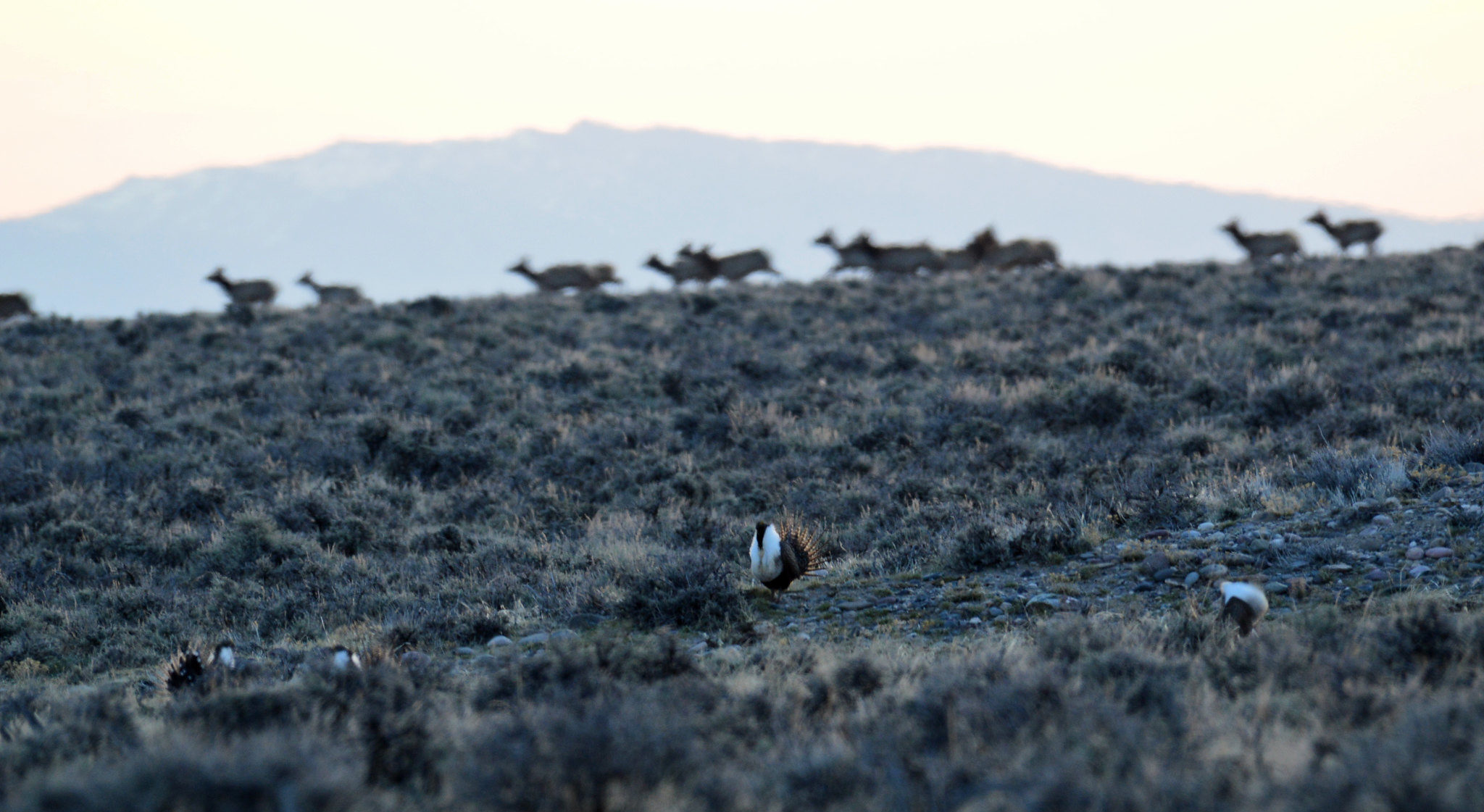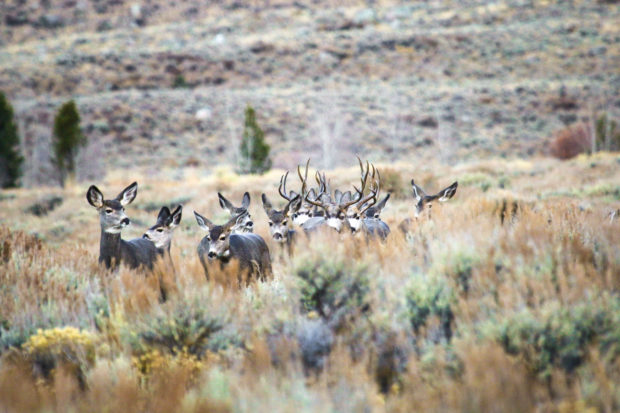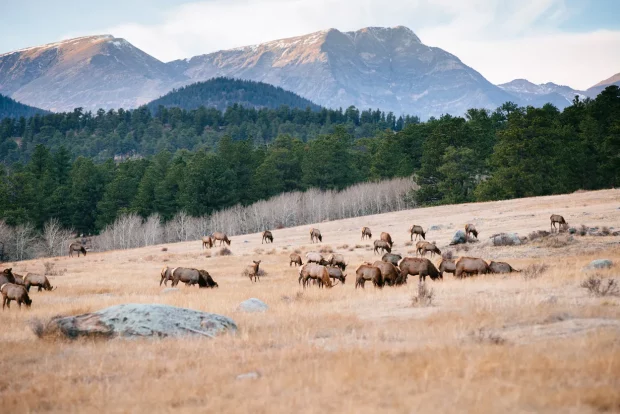We have much more to do and your continued support is needed now more than ever.
Reforming Oil and Gas Leasing Will Benefit Wildlife, Our Public Lands, and Waters
How the June Lease Sale Should be a Model for Permanent Reforms

The news that the U.S. Senate will soon vote on a reconciliation bill that contains important fiscal reforms for the oil and leasing system is terrific news for our public lands and waters and for American taxpayers. The Inflation Reduction Act will raise royalty and rental rates so that energy companies pay fair market prices for the privilege of using our public lands. The bill will end the practice of noncompetitive leasing, which for too long has allowed oil and gas companies to lease lands for as little as $1.50 an acre. Perhaps most importantly, the legislation raises bonding fees so oil and gas companies will pay for the cleanup of the lands they use. The National Wildlife Federation has long advocated for these reforms and applauds Senators Manchin and Schumer for this historic legislation.
But even after this legislation is signed into law, there is still important work that the Biden administration must do to ensure that future oil and gas leasing is done in a responsible manner to benefit wildlife and our public lands.
We have reason to be hopeful.
While it didn’t receive all of the positive attention it deserves, the June onshore oil and gas lease sale was a model for how the Bureau of Land Management (BLM) should offer up leases.
Leading up to the sale, the BLM deferred nearly 80% of all nominated parcels. The agency made these deferrals using a reformed approach to leasing, which included considering a parcel’s proximity to existing oil and gas development, its potential for recovery of oil and gas resources, and possible conflicts with important wildlife habitat and connectivity.
The result was a lease sale of diminished scope that prioritized parcels where development potential was high and impacts to wildlife habitat were low. The agency properly deferred lands where there was little to no potential for oil and gas recovery and where new development would be far from existing activity and infrastructure.
Moreover, the agency recognized and conserved important wildlife habitat across the West. The following are a few examples of landscapes that, as a result of the agency’s reformed leasing approach, were not available for auction in the recent sales.
It is important to note, however, that deferrals today do not mean parcels are deferred forever. To reduce the chances of future development on these and similar landscapes, the BLM must codify oil and gas leasing reforms through a formal rulemaking process.
Wyoming’s Golden Triangle
The BLM deferred dozens of parcels from its June 2022 lease sale in an area known as Wyoming’s Golden Triangle. This rolling sagebrush country is home to the densest population of greater sage-grouse in the world, including a “super-lek” where hundreds of male birds spend spring mornings attracting females with their mating song and strut. This area is considered by the BLM and the State of Wyoming as core habitat for greater sage-grouse.

The Golden Triangle also makes up a stretch of the 150-mile long Red Desert to Hoback mule deer migration corridor, along which mule deer travel between winter ranges in the Red Desert and mountainous summer ranges. The corridor, which is the longest mule deer migration ever recorded, recently received designation and certain protections from the State of Wyoming. Further, crucial habitat for elk, deer, and pronghorn blanket the Golden Triangle, providing important forage and shelter for these big game species. In the fall, thousands of pronghorn congregate on the landscape during their rut, watering in the Big Sandy River and grazing in the sage.
The BLM was right to defer oil and gas leasing in the Golden Triangle, managing this landscape instead for its abundant wildlife and important habitat.
Colorado’s Big Game Habitat
The BLM deferred several parcels at the base of the Elkhead Mountains in Northern Colorado that serve as winter range for the Bear’s Ears mule deer and elk herds. With the White River herds to the south, there are estimated to be between 75,000 and 80,000 deer and 65,000 and 70,000 elk who occupy this range. These herds migrate from their summer ranges at the headwaters of the Yampa and White Rivers east to low-elevation sage and shrublands, including the deferred parcels.

“These deferrals were good news for the elk, deer and other iconic species that make their home at the base of the Elkhead Mountains,” said Suzanne O’Neill, executive director of the Colorado Wildlife Federation. “The deferrals will help enable the Bureau of Land Management to make big game conservation management decisions on a functional landscape level for the public lands it manages, as it begins the process of developing its Colorado statewide amendment to its resource management plans.”
The State of Colorado has identified these areas as a priority area for management and protection in their Wildlife Action Plan, prepared in response to the Department of Interior’s Secretarial Order 3362 on improving big game migration corridors and habitat. Deferral of these parcels will reduce pressure on mule deer and elk, helping to ensure these animals continue their movements across the landscape unimpeded and have access to forage during Colorado’s harsh winters.
Pronghorn Migration Corridors in Montana
In recent years, Montana Fish, Wildlife and Parks (MTFWP) has been studying migration patterns of big game, including pronghorn, to better understand their movements, needs, and obstacles. In 2021, the MTFWP shared the early results of telemetry data gathered from female pronghorn in Eastern Montana, showing movements through the middle of six parcels proposed for the June 2022 lease sale. After reviewing the telemetry data, the BLM decided to defer these six parcels to avoid impacts to the potential corridor.
“We’re very pleased to see the deferral of these six parcels. Southeastern Montana is revered by hunters across the state and those particular parcels are not only important for big game, but many unique species such as the imperiled greater sage-grouse,” said Alec Underwood, Senior Policy and Development Director for the Montana Wildlife Federation. “We appreciate that the BLM is taking a hard look at the potential impacts of development on these species and hope that they can continue to protect key habitat, which will, in turn, protect our sporting opportunities for future generations to enjoy.”
With additional data gathered in coming years, the BLM and the MTFWP will work to address the effects that oil and gas development could have on pronghorn and their movement across this landscape.
The Need for Durable Protections
This most recent sale demonstrates that a reformed approach to leasing works—the BLM protected important wildlife habitat while prioritizing oil and gas development where there is high potential for recovery. However, while the BLM’s modified approach to oil and gas leasing reduced the scope of the sale and resulted in many important deferrals, the BLM has discretion in whether it applies these reforms in future lease sales.
To ensure that these and other reforms are consistently applied in the future, these changes must be made permanent through a formal rulemaking process. The resulting regulation would have the full force and effect of law and would apply to all onshore oil and gas lease sales moving forward. Combined with the fiscal reforms in the proposed reconciliation bill, a BLM rulemaking would provide a more balanced and sustainable approach to onshore oil and gas development to benefit wildlife and all who enjoy spending time outside on our public lands.





















